Lolita the Orca; Facts, Legal Issues and How To Get Her Home
LOLITA
 Photo courtesy of Colleen Gorman
Photo courtesy of Colleen Gorman
“It is simply her remarkable spirit that has kept her alive this long”
Name: Lolita
Prior name: Tokitae – which means ‘”nice day, pretty colors” in Chinook
Nickname: affectionately known as “Toki”
Species: (Orcinus orca) Killer Whale, also called Orca
Approx. size: 21 feet long
Approx. wt: 6,000 lbs
Approx. age: 43 yrs
Location: Miami Seaquarium (MSQ), Miami, FL, a subsidiary of Wometco, a privately held company.
Family: Lolita’s birthright is the L25 matriline of the “L” pod of the Southern Resident orca community in the Pacific Northwest. Lolita’s mother is believed to be Ocean Sun, approx. age 82, who still resides with Lolita’s family swimming freely in the open waters where Lolita was captured. Her capture occurred right before implementation of the Marine Mammal Protection Act which helps protect her family members from being taken, although loopholes still exist in these laws. In 2005 the Southern Resident orcas were listed as endangered species. Because Lolita was caught ‘pre-act’, the powers-that-be excluded her from the status of endangered. More on Lolita’s Life before Capture: HERE
Captured: August 8, 1970 in Penn Cove, Whidbey Island, Washington State. Lolita is the last surviving orca of 45 members of the Southern Resident community that were captured and delivered for display in marine parks between 1965 and 1973. At least 13 members of her family were killed during the brutal captures. More on Lolita’s Capture: HERE
Lolita’s Life at Miami Seaquarium: Lolita arrived at Miami Seaquarium on September 24, 1970. She was kept separated from her future tank-mate orca Hugo until June 2, 1971. They performed together for 9 years until Hugo’s death in 1980 after repeatedly bashing his head into the walls of the pool, in what many believe to be an act of suicide. (Click HERE for more information on Hugo’s death including Necropsy Report). After 12 years of service – they simply dropped his body in the Miami dump. Lolita has been alone (aside from a few dolphins) for 30 years, performing tricks for tourists, two shows a day. Since 1970 Lolita has resided in what is the smallest and oldest orca tank in the United States. The tank is merely one-and-a-half-times her size, has garnered numerous safety violations, and does not meet US Department of Agriculture’s (USDA) Animal and Plant Health Inspection Service (APHIS) Regulations. Now a young adult at about 43 years old, Lolita has been a “captive” entertainer for 40 years. Only Corky at Sea World in San Diego, captured in 1969, has been in captivity longer. The Gulf oil spill caused by oil giant BP is now threatening the captive marine mammals at MSQ, including Lolita. MSQ and the USDA and APHIS are not prepared to deal with this crisis. More on Lolita’s Life Today: HERE …and the BP oil spill contamination: HERE… and eye-witness visits to Lolita HERE.
UPDATE- October 25, 2013: Not much has changed for Lolita since we first posted this information in September of 2010. Brought to us by our friends at the Orca Network and Dr. Ingrid Visser of Orca Research Trust is the following 8-1/2 minute documentary “A Day in the Life of Lolita, the Performing Orca” produced by Daniel Azarian. It follows a visit to Miami Seaquarium by Ingrid in the summer of 2013 and outlines much of what is contained in this report. It is superbly produced and is a “must-watch” for all who are concerned about Lolita’s welfare. Thank you Orca Network, Ingrid and Daniel for an incredible documentary.
–
–
Captivity continues without enforcement of numerous Animal Welfare Act Regulation Violations:
- Perimeter Fence & Protection from Abuse and Harassment: Lolita’s pool does not meet the requirements to keep animals and unauthorized people out nor does it provide protection from abuse and harassment by the viewing public. (see more below)
- Protection from Weather and Direct Sunlight: Lolita is not afforded protection from the weather or from direct sunlight to benefit her health and well-being. (see more below)
- Space Requirements for Orca:The most egregious violation which has not been enforced is that of Lolita’s pool size, comparable to that of a bathtub for a marine mammal of her size. (see more below)
- Housing with Compatible Animals: Lolita has not been in the company of another orca since 1980. This highly social animal is subjected to this solitude with the unfounded belief that her dolphin tank-mates are an acceptable replacement for a member of her own species. (see more below)
- Emergency Contingency Plans: The wellbeing of Lolita and the other marine mammals at MSQ are now being threatened by the Gulf oil spill and MSQ and APHIS have neglected to enforce Emergency Contingency Plan requirements. (see more below)
- Pool Environment Enhancements: Non-food objects are utilized in Lolita’s pool for stimulation which may subject her to injury through ingestion. (see more below)
- Hurricane Threats with no Plan to Protect Marine Life & Contamination of Biscayne Bay (see more below)
Miami Seaquarium General Information and Owner Information (see more below)
Campaigns to Retire Lolita to a SeaPen (see more below)
_______________________________________________________________
PERIMETER FENCE & PROTECTION FROM ABUSE AND HARRASSMENT
Animal Welfare Act 9 C.F.R. PART 3—STANDARDS
Section 3.103 (3)(c) Perimeter fence
“On and after May 17, 2000, all outdoor housing facilities must be enclosed by a perimeter fence that is of sufficient height to keep animals and unauthorized persons out. Fences less than 8 feet high for polar bears or less than 6 feet high for other marine mammals must be approved in writing by the Administrator. The fence must be constructed so that it protects marine mammals by restricting animals and unauthorized persons from going through it or under it and having contact with the marine mammals, and so that it can function as a secondary containment system for the animals in the facility when appropriate. The fence must be of sufficient distance from the outside of the primary enclosure to prevent physical contact between animals inside the enclosure and animals or persons outside the perimeter fence. Such fences less than 3 feet in distance from the primary enclosure must be approved in writing by the Administrator.”
Lolita’s tank definitely does not have a 6 foot perimeter fence around it. Anyone could reach their hands over the tank or jump in it if they really wanted. I don’t think a trainer would have time to stop it. Comparing to SW and Six Flags, they all have the high glass type enclosures that one cannot just reach or climb over easily. So per the law, the APHIS administrator would have had to approve of the fence. So the question would be, was Lolita’s perimeter fence approved by the Administrator?
3.101 (2) Facilities, general
“All marine mammals must be provided with protection from abuse and harassment by the viewing public by the use of a sufficient number of uniformed or readily identifiable employees or attendants to supervise the viewing public, or by physical barriers, such as fences, walls, glass partitions, or distance, or any combination of these.”
This would also bring the perimeter fence into play since there is no physical barrier tall enough to protect Lolita from the viewing public. Looking at old pictures of Lolita and Hugo, there was a much higher fence around their tank at one point that was over 6 feet, but I don’t know when it was changed.
PROTECTION FROM WEATHER AND DIRECT SUNLIGHT
Section 3.103(3)(b) Shelter
“Natural or artificial shelter which is appropriate for the species concerned, when the local climatic conditions are taken into consideration, shall be provided for all marine mammals kept outdoors to afford them protection from the weather or from direct sunlight.”
Lolita’s tank has no shade structure at all. As seen by the image from Google Earth, her tank is fully exposed to the sun. The only way she can get shade is by moving around the tank as the position of the sun changes. Lolita also has no protection from the Miami hurricanes. Miami is known to be an area in the United States that is prone to hurricanes.
Graphics courtesy of Wendy
Now in 2008, Six Flags Discovery Kingdom was found in “Indirect non-compliance” of Section 3.103. The inspection report reads:
“Shouka stadium back area: there are no shade structures in the three pools in the back of the facility. Shade structures need to be added over or around the pools. This is necessary for the protection from the sunlight for the health and well-being of the animals.”
My question is does APHIS consider the stadium seats around Lolita’s tank and the barrier wall behind the medical pool her shade structures. If you look at the picture of Shouka’s stadium below, there is nothing at all around the 3 pools in the back. Shouka’s stadium is similar to Lolita’s with the stadium seats being shaded (except for the front rows), the main pool is exposed to the sun and in between the main pool and back tanks is a high wall that goes across the back of the tank the length of the pool.
Yes, the stadium cover and wall structure provide shelter throughout the day to protect Lolita from direct sunlight, but there are periods of the day where those structures do not provide protection from direct sunlight. Is it considered by APHIS that the periods of the day when the tank is fully exposed to the sun are insignificant since there are parts of the day when Lolita is provided shade as the sun’s position changes?
Graphics courtesy of Wendy
SPACE REQUIREMENTS FOR ORCAS
3.104 Space Requirements
“(a) General. Marine mammals must be housed in primary enclosures that comply with the minimum space requirements prescribed by this part. These enclosures must be constructed and maintained so that the animals contained within are provided sufficient space, both horizontally and vertically, to be able to make normal postural and social adjustments with adequate freedom of movement, in or out of the water. (An exception to these requirements is provided in §3.110(b) for isolation or separation for medical treatment and/or medical training.) Enclosures smaller than required by the standards may be temporarily used for nonmedical training, breeding, holding, and transfer purposes. If maintenance in such enclosures for nonmedical training, breeding, or holding is to last longer than 2 weeks, such extension must be justified in writing by the attending veterinarian on a weekly basis. If maintenance in such enclosures for transfer is to last longer than 1 week, such extension must be justified in writing by the attending veterinarian on a weekly basis. Any enclosure that does not meet the minimum space requirement for primary enclosures (including, but not limited to, medical pools or enclosures, holding pools or enclosures, and gated side pools smaller than the minimum space requirements) may not be used for permanent housing purposes. Rotating animals between enclosures that meet the minimum space requirements and enclosures that do not is not an acceptable means of complying with the minimum space requirements for primary enclosures.”
“(1)(i) The required minimum horizontal dimension (MHD) of a pool for Group I cetaceans shall be 7.32 meters (24.0 feet) or two times the average adult length of the longest species of Group I cetacean housed therein (as measured in a parallel or horizontal line, from the tip of its upper jaw, or from the most anterior portion of the head in bulbous headed animals, to the notch in the tail fluke8 ), whichever is greater; except that such MHD measurement may be reduced from the greater number by up to 20 percent if the amount of the reduction is added to the MHD at the 90-degree angle and if the minimum volume and surface area requirements are met based on an MHD of 7.32 meters (24.0 feet) or two times the average adult length of the longest species of Group I cetacean housed therein, whichever is greater.”
The minimum horizontal dimension for Lolita’s tank would be 48 feet, which APHIS agrees. APHIS claims that Lolita’s tank is 60 x 80 feet, not including the medical pool in the back. Lolita is around 22 feet long. By APHIS claiming Lolita’s tank is 60 feet across from the edge of the pool to the trainer’s platform would mean you could line Lolita up in a straight row approximately 3 times to equal the 60 feet distance. Clearly, this is impossible.
Photo courtesy of Shelby
Per measurements taken from Google Earth of Lolita’s tank, the measurement between the edge of the pool to the trainer’s platform is approximately 35 feet, which is 25 feet less than APHIS’s measurement of 60 feet and 13 feet smaller than what the law requires.
Graphics courtesy of Wendy
A response from Google Earth regarding the accuracy of the straight line measurements is pending. Taking a measurement of the length of the tank APHIS states is 80 feet concluded Google Earth’s measurements to be quite accurate as there is no dispute that this length of Lolita’s tank is 80 feet.
Adding in the medical pool in the back of Lolita’s tank, which measures approximately 25 feet would coincide with the 60 foot measurement APHIS states. Yet APHIS states they did not include the medical pool in their measurements of 60 x 80 feet and the use of the medical pool does not diminish the size of the main pool.
Graphics courtesy of Wendy
On December 14, 1995 the Miami Herald published an article “Lolita’s tank is big enough, feds say”.
“Lolita the Killer Whale has enough room in her tank at Miami Seaquarium, federal animal-protection officials ruled Wednesday. A week after re-measuring Lolita’s pool in response to persistent complaints from an animal activist, the U.S. Department of Agriculture said the tank exceeds minimum legal space requirements. “There is adequate space,”said Dr. Richard Watkins, the USDA’s southeast regional director for animal care….“
HOUSING WITH COMPATIBLE ANIMALS
Section 3.109 Separation
“Marine mammals, whenever known to be primarily social in the wild, must be housed in their primary enclosure with at least one compatible animal of the same or biologically related species, except when the attending veterinarian, in consultation with the husbandry/training staff, determines that such housing is not in the best interest of the marine mammal’s health or well-being. However, marine mammals that are not compatible must not be housed in the same enclosure. Marine mammals must not be housed near other animals that cause them unreasonable stress or discomfort or interfere with their good health. Animals housed separately must have a written plan, approved by the attending veterinarian, developed in consultation with the husbandry/training staff, that includes the justification for the length of time the animal will be kept separated or isolated, information on the type and frequency of enrichment and interaction, if appropriate, and provisions for periodic review of the plan by the attending veterinarian. Marine mammals that are separated for nonmedical purposes must be held in facilities that meet minimum space requirements as outlined in §3.104.”
Lolita has been without the companionship of another orca for 30 years. APHIS states the Miami Seaquarium meets AWA regulations requiring that social marine mammals, such as orcas, be housed with at least one compatible animal of the same or biologically related species. Lolita has shared her tank for many years with Pacific white-sided dolphins that are, like Lolita, cetacean mammals.
Lolita is a member of the Southern Resident Community of orcas in the Pacific Northwest. The Southern Residents are a social structure of orcas consisting of generations of family. There is no known Southern Resident orca leaving from their pod to live with a pod of Pacific White Sided Dolphins.
Howard Garrett of Orca Network also stated “in 2009 a paper was published proposing that the species Orcinus orca be divided into several new species, based on the observed fidelity and cohesion of distinct interrelated family groups. See: LeDuc, Richard G., Kelly M. Robertson, and Robert L. Pitman (2008). Mitochondrial sequence divergence among Antarctic killer whale ecotypes is consistent with multiple species Biol. Lett. (2008) 4, 426–429. Link: HERE
“The congruence of these lines of evidence suggests that the divergence between these types represents a species boundary. Given this fidelity and cohesion within extended family groups, now universally accepted within the scientific community, the only compatible animal for Lolita would be a member of the Southern resident community. Based on their shared calls, Hugo was probably also a member of the Southern residents. Since 1980 the Seaquarium and USDA have no basis in stating that Lolita is housed with a compatible animal, or any other cetacean would be a compatible animal, except another member of her genetic and cultural community.”
Six Flags again was found in “Indirect non-compliance” on May & June of 2008. The inspection report states:
“The orca is single housed. They are using a dolphin as a companion animal but they are separated but next to each other the majority of the time. This situation is being reviewed by USDA APHIS.”
Is the Miami Seaquarium to be entrusted to say that Lolita is not separated by gates from the dolphins the majority of the time? And the wording of APHIS stating “They are using a dolphin as a companion animal” sounds strange compared to their statement that the Miami Seaquarium meets Section 3.109 requirements because Lolita is housed with another cetacean.
In May of 2010, Colleen Gorman, an individual concerned for animal welfare gave an account of her visit to the Miami Seaquarium and documented the conditions of Lolita’s daily routine and the solitude of Lolita and her separation from her tank-mate dolphins who are often separated by gates dividing the main pool and medical pool. Colleen’s account can be found HERE.
EMERGENCY CONTINGENCY PLANS
Section 3.101 (4)(b) Facilities, general
“(b) Water and power supply. Reliable and adequate sources of water and electric power must be provided by the facility housing marine mammals. Written contingency plans must be submitted to and approved by the Deputy Administrator regarding emergency sources of water and electric power in the event of failure of the primary sources, when such failure could reasonably be expected to be detrimental to the good health and well-being of the marine mammals housed in the facility. Contingency plans must include, but not be limited to, specific animal evacuation plans in the event of a disaster and should describe back-up systems and/or arrangements for relocating marine mammals requiring artificially cooled or heated water. If the emergency contingency plan includes release of marine mammals, the plan must include provision for recall training and retrieval of such animals.”
This would require the Miami Seaquarium to have a written contingency plan regarding emergency sources of water and electric power in the event of a failure of the primary sources, when the failure could affect the health and well-being of a marine mammal. They are required to have a plan for whatever the circumstance may be that would cause a failure of their primary source of water and electrical. The oil spill threat of 2010 made the absence of a contingency plan extremely negligent on the behalf of the Seaquarium.
In July, 2010 the National Oceanic and Atmospheric Administration (NOAA) predicted a 61- 80% chance that the Gulf of Mexico oil spill would hit the Miami area in August. In addition to the oil, the chemical dispersant used to break up the oil, which is dangerous to the health of animal life, was to be included in the toxic mix approaching Miami waters as reported by the NOAA HERE. Miami Seaquarium demonstrated they are not prepared to deal with any pending disaster.
Due to the possibility that contaminated water may still reach Miami, the public and by animal welfare organizations are still concerned for the safety and health of Miami Seaquarium’s wildlife. In addition to killer whale (orca) Lolita, the lives of 30 dolphins, 15 seals and sea lions, dozens of reptiles/fish, sea turtles, and at least eight manatees may be in peril. Built in the 1950’s, this marine mammal park relic uses an open water system, which feeds directly from Biscayne Bay filling its numerous performing animal tanks, including that of Lolita.
Andrew Hertz, General Manager of Miami Seaquarium demonstrated his non-compliance through public statements in media reports and by indications of intent to file monetary claims against oil corporation BP. These acts indicate Miami Seaquarium has an insufficient filtration system and a lack of reliable and adequate emergency sources of water in the event of failure of the primary source, as was anticipated to occur in August, 2010 via contamination from the Oil Spill in the Gulf of Mexico. The contaminated water, with its toxic mix of chemical dispersants still poses a threat to the good health and well-being of the marine mammals housed in this facility.
Through published media at WPLG Channel 10 in Miami HERE, Mr. Hertz stated his intention to file a $3 to $5 million dollar claim against BP citing his requirement to upgrade the marine park’s filtration system
By this action, Mr. Hertz admittedly demonstrated that MSQ is not prepared, equipped or otherwise capable of carrying out a contingency plan (Plan) to provide emergency sources of water and/or arrangements for relocating marine mammals as is required by Regulation 9 CFR section 3.101(b). The news report states, in part:
“If I have damages, I’ve got dead animals that are irreplaceable. I need help on the front end to keep that from happening,” Hertz said. When the Seaquarium pulls saltwater from Biscayne Bay, the water goes through a complicated filtration system before it gets to the animals. But Seaquarium representatives said even that system cannot handle large amounts of oil, so they are looking at alternatives — but none of them are cheap. “Whether it is digging a deep well here on property that hits salt water underground or whether it is burying a new intake under the seabed out there so the seabed turns into a filtration system for us, however it works it is going to cost money I don’t have in my budget right now,” Hertz said.
Additionally, APHIS spokesman David Sacks indicated that a Plan exists but APHIS does not have a copy of the Plan. I believe this is an irresponsible act by APHIS by failing to maintain copies of Emergency contingency plans or to substantiate and/or verify the existence of such. Mr. Hertz went on to contradict the APHIS assertion that a Plan exists; “We have been consulting with APHIS as we develop our contingency plans. Once finalized, we will send the plan to them. Moving the animals is not a consideration”, Hertz added. Both Mr. Sacks’ and Mr. Hertz’s statements were made public in numerous media outlets including Washington’s Kitsap Sun HERE.
On July 6, 2010 John Kielty, an individual concerned for the wellbeing of marine mammals filed a request for information with the USDA/APHIS Freedom of Information Act office requesting to receive a copy of Miami Seaquarium’s contingency plan to provide emergency sources of water and/or arrangements for relocating marine mammals as is required by APHIS Regulation 9 CFR section 3.101(b). Additionally, he requested a copy of any proposed Disaster Plan submitted to APHIS regarding the pending contamination of the MSQ water supply by the gulf oil spill. This request was assigned case #FOIA 10-530. The response from APHIS dated July 20, 2010 states the following:
“The Animal Welfare Act (AWA) does not have a disaster plan requirement. Although a written “emergency” contingency plan for marine mammals must be submitted and approved by the Deputy Administrator, the AWA regulations do not require APHIS to maintain these plans. Nevertheless, Agency employees conducted a thorough search of their files and have advised the FOIA office that our Agency has no records responsive to this request.”
As the Gulf oil spill caused by oil giant BP was threatening captive marine mammals, including Lolita, Mr. Kielty objected to the claim that the AWA does not have a disaster plan requirement. Regulation 9 CFR section 3.101(b) clearly states the requirement for specific animal evacuation plans in the event of a DISASTER and additionally objected to the claim that APHIS does not have a copy of emergency plans as required by APHIS Regulation 9 CFR section 3.101(b).
Miami Seaquarium’s emergency contingency plans need to be made available to the many individuals and organizations that would need to make short term preparations should the evacuation of Lolita become necessary. In a recent interview with the Puget Sound Marine Life Examiner HERE, Howard Garrett of Orca Network expressed the need for immediate actions;
“I’d like to see something announced this week, either by APHIS or the SQ. It would be highly irresponsible to wait until the oil is lapping on the side of the park. There’s a lot of logistics to get into motion to get the bay pen prepared, the transport arranged, the personnel lined up, and to get her accustomed to going into a sling, give her physical exams, etc. The dispersant penetrates the skin and the oil kills rapidly. Letting her be hit by oil would be corporate negligence, like the BP gusher itself.”
The above statements clearly demonstrate there are contradictions and discrepancies in statements by APHIS officials and those by Miami Seaquarium’s management.
POOL ENVIRONMENT ENHANCEMENTS
Section 3.101(2)(g) Facilities, general
“(g) Enclosure or pool environmental enhancements. Any nonfood objects provided for the entertainment or stimulation of marine mammals must be of sufficient size and strength to not be ingestible, readily breakable, or likely to cause injury to marine mammals, and be able to be cleaned, sanitized, and/or replaced effectively.”
Could this wetsuit be construed as ingestible or readily breakable? Is this an appropriate nonfood object to entertain or stimulate Lolita? Considering that her trainers wear wetsuits, is giving her one to “entertain” or “stimulate” Lolita a good idea for the safety of the trainers?
Sewage in Biscayne Bay
One of the most prolific reasons given by Miami Seaquarium staff and supporters of Lolita’s continued captivity is a claim that she is safer in the waters fed by Biscayne Bay than she would be in the waters of the Pacific Northwest, citing contamination in the PNW would kill her. This statement is false and perpetuated by the staffs at marine parks, but it’s not connected to reality. Howard Garrett of Orca Network indicates the toxins of Washington’s coastal waters are bioaccumulative endocrine disrupters, like PCBs, not infectious pathogens. No immunity can be built up, and since it takes decades for dangerous levels to accumulate in blubber layers, and the effects occur mainly only as a result of the effects of malnutrition, the toxins would not be a factor for Lolita.
Conversely, over-development of Miami-Dade has had a significant impact on surface water quality in Biscayne Bay. In many of the coastal areas in the region, the infrastructure to convey storm water and sewage is outdated. Storm water runoff from intensively developed properties and roadways, hydrologic modifications, and pollution from septic systems pose the greatest threats to water quality in Biscayne Bay as reported HERE and HERE.
In July 2010, a 72-inch pipe burst and spewed an estimated 20 million gallons of sewage into Biscayne Bay, city officials in some municipalities that were affected say Miami-Dade County did little to notify them. The cause of the break was due to the “catastrophic failure” of the reinforcing wire in the pipe which was manufactured by a company that is now out of business. The county may be faced with a large-scale and costly effort to prevent further breaks from occurring. Read more HERE.
With these water quality issues and Miami-Dade’s failures to notify businesses in the event of contamination, we can not rely on Miami Seaquarium to discover problems and react to protect Lolita and their marine life. As recently as 2007, Miami Seaquarium was cited for failing to meet the pathetic minimum standards for bacterial testing as required by the USDA Animal & Plant Health Inspection Services (APHIS). The lax standards that are in place call for bacterial coliform testing to be performed at least weekly. Not a high priority for MSQ. On at least 3 occasions in 2007, Miami Seaquarium exceeded these minimums including a 15 day period in February, 2007 when no bacterial testing was performed. And this is only what APHIS has discovered and reported. This is just another example of Miami Seaquarium’s lack of concern for the welfare of their marine life.
Hurricane Threat
The 2010 hurricane forecast from the National Weather Service indicates ‘major hurricanes’ are ahead, and Miami Seaquarium has no Hurricane Preparedness plan, APHIS does not require and/or enforce a disaster contingency plan. MSQ has shown repeatedly that they are not equipped and/or capable of dealing with these frequent storms that ravage the southern Florida coast. The hurricane forecast can be found HERE.
As a result of hurricane Andrew in 1992, 5 sea lions were electrocuted when the pumping system in their pool flooded and over 60 sharks died of asphyxiation when silt laden bay water flooded the shark moat. But employees found five new baby peacocks, and a 50-pound baby manatee… so all was well.
In 2006, Miami Seaquarium re-opened after a storm surge from Hurricane Wilma dropped silt into low-lying exhibits, killing more than 1,000 fish and 15 sharks. Upon reopening, the park had even more fish, as curators collected more than 2,500 from Biscayne Bay and nearby reefs to replace the fish that died after the storm. “There’s twice as many fish as there were before Wilma,” Seaquarium curator Robert Rose said. Some of the new fish were donated, while Rose and other staff members went out on boats and donned scuba gear to do some of the collection themselves. Hertz said the storm cost $2.5 million in property damage and $4.4 million in lost revenue to the park. A nice little insurance claim. These disasters, natural or otherwise translate into a nice payday for MSQ and the Hertz’s. It all just comes at the expense of their marine life. CBS 4 reports HERE.
MIAMI SEAQUARIUM GENERAL INFORMATION and OWNER INFORMATION
Miami Seaquarium Information:
Marine Exhibition Corp., Inc
dba Miami Seaquarium
4400 Rickenbacker Causeway
Miami, FL 33149
305-361-5705
http://www.miamiseaquarium.com/
General Manager, Andrew Hertz (son of Wometco CEO Arthur Hertz)
From 1963 through 1967; 88 television episodes and two movies starring “Flipper” were filmed at MSQ. Richard O’Barry, former dolphin and orca trainer turned marine mammal activist, quit shortly after Hugo’s arrival stating that it was “ridiculous” to keep a grown killer whale in a tank that size. “Ric” O’Barry continues to advocate for Lolita’s retirement and return to her home waters.
The Miami Seaquarium is owned by:
Wometco Enterprises Inc. Headquarters
3195 Ponce DeLeon Blvd.
PO Box 141609
Coral Gables, FL 33134
Tel(305) 529-1400
Fax(305) 529-1466
900 employees
CEO: Arthur Herman Hertz (Father of MSQ General Manager, Andrew Hertz)
Wometco owns and operates amusement parks, theme parks and ice cream parlors. Through Subsidiaries operates Seaquarium (50%) and Baskin Robbins Ice Cream Parlors (50%)
Who is Arthur Hertz??
Arthur Herman Hertz
Born Sept. 10, 1933. University of Miami BBA
Home: 610 Fluvia Ave, Coral Gables, FL 33134
Home phone: 305-448-8425
This is the fellow giving the credit for all of Lolita’s abuse and neglect to US, the general public! As long as people buy tickets to see Lolita and to go into the Miami Seaquarium Lolita will remain a
SLAVE…. until she finally just gives up. As long as we make no attempt to address this issue, Lolita will remain in a state of distress and neglect.
Arthur Hertz is also-
*Chairman and CEO of Wometco Enterprises, Inc., a private company that owns the Miami Seaquarium®, Wometco de Puerto Rico, Inc.
*Owner/operator of 57 Baskin-Robbins ice cream parlors in Puerto Rico, and franchisee of Dunkin’ Donuts for Puerto Rico.
*Officer of Miami Wallscapes
*Seasoned real estate investor
*Chairman of the board of Theater Realty, Inc., Hertz-Brown Venture 167 Corp., and Sawgrass Investment Corp,
*Member of the University of Miami’s Board of Trustees, where he serves as the University’s representative to the DRIF board.
*Director of Diabetes Research Institute- We see how Lolita is treated, yet he plays an active role in helping humans!!!
*Active participant in numerous charitable causes and professional organizations throughout the South Florida community including:
Florida Tourism Commission
Visit Florida
Greater Miami Chamber of Commerce
Mitchell Wolfson Sr. Foundation
Jackson Memorial Hospital Foundation
YMCA
National Audubon Association
Orange Bowl Committee
Miami-Dade Public Health Trust
Miami Parking Authority
Arthur Hertz has been known to donate to organizations while leaving Lolita in a substandard sized tank for 40 years. Over $113,000.00 in Campaign Contributions in 2008 alone:
Joe Garcia for congress $9200
Schauer for congress $1000
Halvorson for congress $1000
Trauner for congress $1000
Act Blue $3000
Kagen 4 congress $1000
Obama $2300
Democratic congressional campaign committee $2500
Kosmas for congress $2300
Hoosiers for Hill $1000
Democratic senatorial campaign committee $6500
Wasserman-schultz for congress $4600
Zack space for congress $1000
Giffords for congress $1000
Raul Martinez for congress $4600
Carney for congress $1000
Lautenberg for senate $4600
Citizens for Harkin $500
Ros-Lehtinen for congress $1000
Tim Mahoney for Florida $4600
Klein for congress $4600
Democratic senatorial campaign committee $28500
John Kerry for senate $1000
DNC Service Corporation/Democratic National committee $43000
All of the above individuals allow Lolita to suffer in captivity while animal welfare laws and regulations are ignored. Mr. Hertz has essentially bought their silence, inaction and ignorance.
In 2008, Mr. Hertz was honored by Public Relations Society of America with the Royal Palms Award. These awards are presented to South Florida individuals who exemplify exceptional leadership and contributions to the public relations profession, the community, and education.
Arthur Hertz carries a $1,000,000 life insurance policy on Lolita. He has been offered this amount for Lolita’s freedom and to date; refuses the offer!
The Miami Seaquarium averages 2,000 visitors a day with Lolita being their star attraction. That’s approximately 730,000 people a year. At $35.95 an adult ticket and $26.95 a child’s ticket, that’s $22,958,500 a year, considering half the visitors are adults and half are children.
And this isn’t even taking into consideration the extra money they make on the swim with dolphin program, which they recently added at a cost of $5,000,000.
On top of that there are the food and beverage concessions, souvenirs, parking ($8 per car), photos as you enter, etc.
Lolita has helped the Miami Seaquarium earn approximately or even more than $895,381,500 in the 39 years she has been held captive there.
Yet Arthur Hertz refuses to let her free and he also refuses to build her a bigger tank!
CAMPAIGNS to RETIRE LOLITA to a SEA PEN
Opponents of captivity for marine mammals have called for Lolita’s retirement and release from her pool at MSQ for years. Captured on August 8, 1970, from Penn Cove, Washington state and sent down to Florida to perform tricks for tourists, Lolita has resided in what is the smallest and oldest orca tank in the United States. The tank is merely one-and-a-half-times her size, has garnered numerous safety violations, and does not meet USDA/APHIS Regulations. Caring people have been trying to help Lolita for decades – writing letters, protesting, raising awareness – but Lolita’s captors are indifferent and uncaring, and they hide behind loopholes in the laws designed to protect our rare and valuable wild animals. Lolita, who is affectionately known as “Toki” (short for her true name, Tokitae – which means ‘shimmering water’ in Chinook), was captured right before implementation of the Marine Mammal Protection Act which helps protect her family members from being taken, although loopholes still exist in these laws. In 2005 the Southern Resident orcas were listed as endangered species. Because Lolita was caught ‘pre-act’, the powers-that-be excluded her from the status of endangered. Lolita’s family, including her mother, now believed to be 82 years old, still swim freely in the open waters where Lolita was captured. Because she was caught ‘pre-act’, the powers-that-be excluded her from the status of endangered. It’s time to return Lolita home, where her family awaits.
There are many wonderful people and organizations willing to work with the Miami Seaquarium, the Unified Commands’ Oil Spill Response efforts, local, state and federal officials and they are ready, willing and waiting to move forward with a rehabilitation, retirement and relocation plan for ALL their marine animals. Details of her retirement plan can be found here: www.orcanetwork.org/captivity/2007proposaldraft.html
Campaigns to free Lolita:
Orca Network
2403 North Bluff Road
Greenbank WA 98253
(360) 678-3451
or toll-free at (866) ORCANET (672-2638)
www.OrcaNetwork.org or email info@OrcaNetwork.org or visit: www.SaveLolita.com
Visit The Orca Project’s page on how YOU can help Lolita by clicking <HERE>.

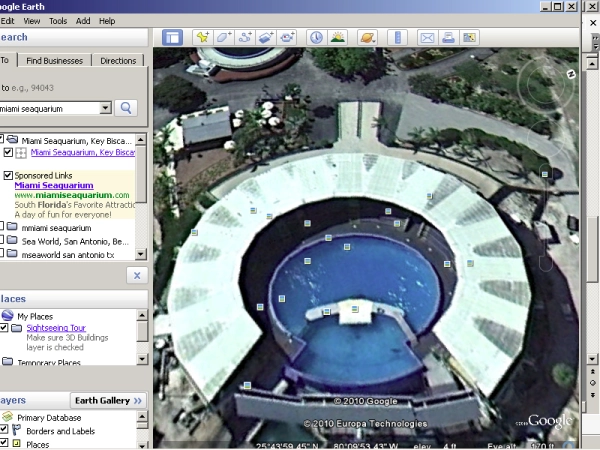
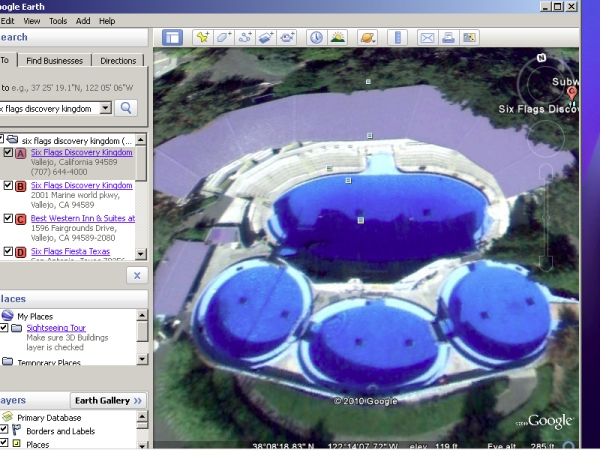


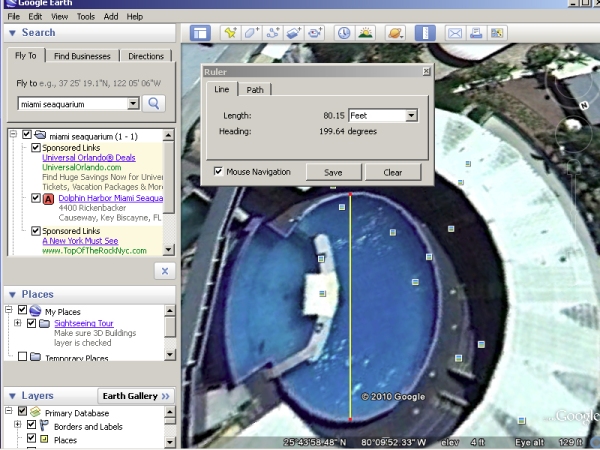

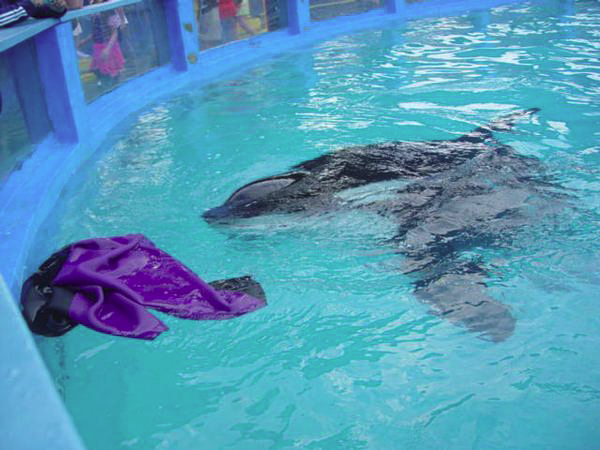
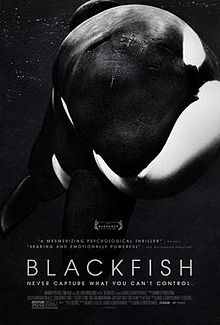
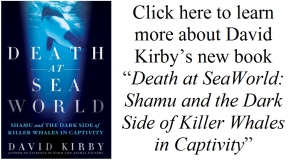

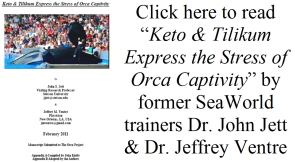
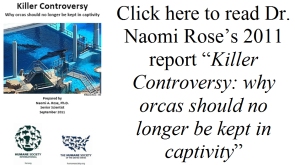



I hate the places they live in and she was my favorite orca I still miss her and wished I could of done more
How can I help my orcas that are being tortured by monsters not humans because humans that are loving are Angel’s to try to protect these lovely Godly creatures of God. God is speaking through all that are fighting for the creation of nature for us to enjoy instead these monsters are killing them there is not enough of us fighting for this poor Orcas please let’s fight just like we voice for the war in Vietnam. We were heard but not fast enough but the point was made let’s fight for our Angel’s that have no voice but our voice. Let’s set a date in Miami fla. To boycott for all Orcas and sea world animals. Please teach me more of what I can do.
Анаболические стероиды являются неимоверно эффективными чтобы увеличения физической активности и роста мышц. Также адски распространено использование стероидов в медицинских целях. Чаще всего стероиды употребляют культуристы и спортсмены, нуждающиеся в ощутительный мышечной массе, а также молодые люди, желающие выглядеть эффектно и привлекать уважение противоположного пола. Однако так ли безопасно их использование, как думают спортсмены, желающие ускорить рост мышц? Вроде влияют стероиды на устройство человека и обратимы ли последствия их употребления?
Стероиды — это биологические соединения, которые обычно являются производным от половых гормонов тестостерона и дигидротестостерона, которые имеют сильно сильное противодействие для человеческий организм. В настоящее срок имеется более 100 разновидностей стероидов, доступных вдруг в форме таблеток, так и в инъекционной форме.
Медицинское использование стероидов
Сообразно медицинским показаниям назначают лечение с использованием стероидов около раке, СПИДе, астме, некоторых болезнях сердца, гормональной дисфункции. Стероиды имеют ясный выраженное противовоспалительное действие, который способствует быстрому заживлению ран, снятию воспалительных процессов, отёков и нормализации работы иммунной системы человека. Также они помогают регулировать метаболизм и контролировать степень электролитов в крови. Употребление стероидов проводится почти контролем врача и опасность развития побочных эффектов сводится практически к 0%
Приобрести стероиды http://www.44.ua/news/2482666/kakie-anaboliceskie-steroidy-mozno-kupit-v-ukraine
i think either way this whale needs to be returned to her home waters. they cannot keep her anymore in that horrible tank in miami. seeing her in that stupid tank is making me wanta throw up right now. i think the miami seaquarium needs to grow up and let this whale go back to her home waters now. if they don’t they will one day go out to her tank and see her dead probably sooner then they think they will. way sooner. so if they wanta see her alive they need to let her go back to her home waters now. maybe start off fresh with first send her to a better place for rehabilitation just like they did with keiko. send her to an aquarium that will have a bigger tank for rehabilitation and training for the wild and then after all that stuff is completely done with, send her to a seapen in her home waters for more training and then if she gets thru everything ok then release her back to the wild. she will learn how to hunt and everything with the training. it will just take some time to get done with. so what if she decides to chose human interaction. i’ve seen whales do that in the wild alot more. just as long as the protection is out there to make sure no one bothers these animals or make sure that no one gets harmed by any of them then that is important. it’s better that this whale goes home to her home waters now then it is to keep her in that terrible condition at the seaquarium. if the seaquarium wants they can send her trainers to both that aquarium where she will be rehabilitated and then send them to the seapen thing to help the new trainers train her for the wild. and also miami seaquarium can buy out that seapen rights if they want. and they can also buy out the whale watching thing there as well. the whale watching thing they will make about a trillion more dollars. believe me this whale needs to be sent home to her waters right this second. i can’t see this whale be in this tank any longer. it’s making me too upset. i hope the staff at the seaquarium reads this because this is really the important case. either this whale goes home or they will see something that they will not expect to see as soon as they go to her tank and it will be all over that news report and everyone will be really upset about it and blame them hard. this whale needs to be home. let her go home. is it ever wrong for this whale to go home now? i really hope the answer to that is no.
Ele sai do desenvolvido para a pele do rosto por uma variedade de variáveis quebrada, tais como infecções, reacções
alérgicas, do envelhecimento indicadores, como um bastante mais. http://www18.tok2.com/home/Reckless/cgi-bin/fan/fantasy.cgi/contact.php/
Paгa Confirmação de pagamento poderá entrar em contato direto comigo, unicamente
clique еm contato no elevado da página ᥱ
também verá meu email е também telefone. http://www.5ijjh.cn/space.php?uid=96248&do=blog&id=379893
https://www.hottpages.com/author/milfordu274/
Guy’s watch this video:
This man just came up with an idea that would be a win/win for both animal activists AND the execs at Seaquarium. The proposal is sending Lolita to a sea sanctuary while in return we have another major attraction that would be built at the park either for free or at least have a major discount on building it. We could even let SeaWorld in on it and possibly have them release some of their orcas with a similar deal. We all know that Lolita might not have much longer to live, and I’d expect the place to close down shortly after her death. So having this deal might be the best option to releasing her. If you can please share this video.
Logo vídeo possui um golpe de cena onde ele já está comendo a buceta dessa morena
gostosa. http://trufu.com/userinfo.php?uid=2229607
So disturbing and sad to watch …. breaks my heart to know she has been in captivity all these years! I refuse to go to one of these shows …. Should be closed down!
Hallo zusammen, ich habe gestern abend blackfish gesehen. ich bin völlig schockiert.ich konnte kaum schlafen,in meinen Gedanken drehte sich alles um tilikum,keto,shamu….. es kann doch´nicht wahr sein was da passiert !!! es muss doch eine Möglichkeit geben , die Freilassung dieser orcas zu erzwingen. das ist so würdelos !! das sind nicht nur Tiere, das sind unsere brüder und Schwestern !!!! mit welchem recht bestimmt der mensch über das Wohlbefinden dieser geschöpfe ?? verdammt lasst diese Tiere endlich in die Freiheit !!!!!
Don’t you really think its time to release Lolita, back with her family???
In our world today, justice seems to be amiss. With tears in my eyes, all I can hope for is a sudden shift in consciousness for the beings who enslave Lolita and all cetaceans being held. The facts stated above are as clear as day, yet $$$ seem to speak louder. To those who visit marine parks, please understand that the $$$ you hand over for entry are, in fact, condemning these innocent animals to a lifetime of imprisonment. You MUST know this. It is not as if there are no alternatives, there are indeed great alternatives but they benefit the cetaceans not the bank accounts of those who are already strikingly wealthy. How greedy, how selfish. I cannot express my appreciation enough for the effort you have put into this article. Somehow, someway, these points must be taken seriously, not just overlooked. Like a game of tennis, marine parks will always have a ball to hit back, but those who want Lolita and others to be free have an endless supply of balls, known as facts. Shame on all marine parks for tricking young children and lying to them about the purpose of their enslavement. What would happen if entry was free, like a museum or library where true education can be found? Marine parks would not be able to function. Yes, they need the dollars to keep the park going, but the profit far exceeds their expenses. If it didn’t would they continue? Think of the animals, you know damn-full well they are not happy, and that they would certainly be happier in a natural environment. Anyone with a heart knows that. We know they can be free and they would thrive. Let them go.
I use firefox and some nights at 12:00 exactly or 12:30 exactly, firefox stops working and does not load a page. The internet connection is perfectly fine though because it says excellent. I am connected to a home router and the signal strength is always excellent. I do not know why this happens at exactly 12:00 or 12:30 on my desktop time but it’s a pain. I’ve tried “ping”ing and everything looks fine..
How soon do you think web crawler will pickup my blog posts?
Hi it’s me, I am also visiting this website daily, this web page is
truly nice and the users are truly sharing fastidious
thoughts.
My video player in joomla doesn’t play videos in firefox if the latest flash player isn’t installed. I’d like to have it like a professional player to show a dialog saying: “Do you want to install flash player 10” or how it says when you go to a professional website so users don’t have to search and download flash player manually…. . Does anyone know, how to do this?.
I know this web site gives quality based content and extra
information, is there any other web page which presents such
information in quality?